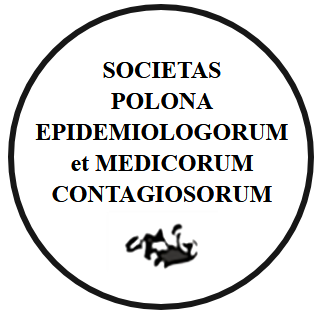RESEARCH PAPER
Gonorrhoea in Poland in 2022
1
Department of Epidemiology of Infectious Diseases and Surveillance, National Institute of Public Health NIH – National Research Institute, Warsaw
Submission date: 2024-09-01
Final revision date: 2024-10-20
Acceptance date: 2024-11-08
Online publication date: 2024-11-22
Publication date: 2024-12-31
Corresponding author
Karolina Zakrzewska
Department of Epidemiology of Infectious Diseases and Surveillance, National Institute of Public Health NIH – National Research Institute, Warsaw
Department of Epidemiology of Infectious Diseases and Surveillance, National Institute of Public Health NIH – National Research Institute, Warsaw
Przegl Epidemiol 2024;78(4):447-458
KEYWORDS
TOPICS
ABSTRACT
Background: In 2022, gonorrhoea cases in EU/EEA countries returned to the pre-pandemic upward trend, reaching a new peak. During the third year of the COVID-19 pandemic, in February 2022, Russia's invasion of Ukraine led to mass migration. Objective: This paper aims to summarize the epidemiological situation of gonorrhoea in Poland in
2022, a year characterized by dual crises. Material and methods: Epidemiological surveillance case-based data on gonorrhoea for 2022, incidence rates from bulletins (years 2013-2022), and the number of patients treated in dermatology-venereology clinics from the Statistical Bulletins of the MoH were compared with data from previous years. Results: In 2022, Poland experienced a rise in gonorrhoea cases, with 630 reported, a 20.7% increase from the pre-pandemic peak in 2019. The incidence rate was 3.22 per 100,000 men and 0.21 per 100,000 women, with significant regional variation (0.08-4.66/100,000). Over 20% of cases reported in 2022 were diagnosed in 2020-2021. Most patients were Polish (91%), and none of the cases involved refugees fleeing the Ukraine conflict. The median time from diagnosis to reporting was 11 days, with 75% of cases reported within 4 weeks. Most cases involved men (93.3%) and were most common in the 25-34 age group (42.9%). N. gonorrhoeae frequently affected the genitourinary tract (79.7%), followed by the rectum (10.1%) and the pharynx (9.9%). Two cases of ocular infections involved adults. Nearly half of the diagnoses in 2022 were made by dermato-venerologists (46%). Conclusions: The COVID-19 pandemic caused delays in reporting cases of gonorrhoea. The war in Ukraine didn't impact the increase in 2022, suggesting that the actual number of infections among refugees remained undetected. Strengthening surveillance and local coordination is crucial to address these and future challenges. Healthcare workers (include surveillance) must provide complete and up-to-date epidemiological data for effective prevention. Public health measures should improved access to diagnostics, treatment, and post-exposure prophylaxis.
FUNDING
The work was carried out as part of task No. BE-1/2024
Share
RELATED ARTICLE
We process personal data collected when visiting the website. The function of obtaining information about users and their behavior is carried out by voluntarily entered information in forms and saving cookies in end devices. Data, including cookies, are used to provide services, improve the user experience and to analyze the traffic in accordance with the Privacy policy. Data are also collected and processed by Google Analytics tool (more).
You can change cookies settings in your browser. Restricted use of cookies in the browser configuration may affect some functionalities of the website.
You can change cookies settings in your browser. Restricted use of cookies in the browser configuration may affect some functionalities of the website.





